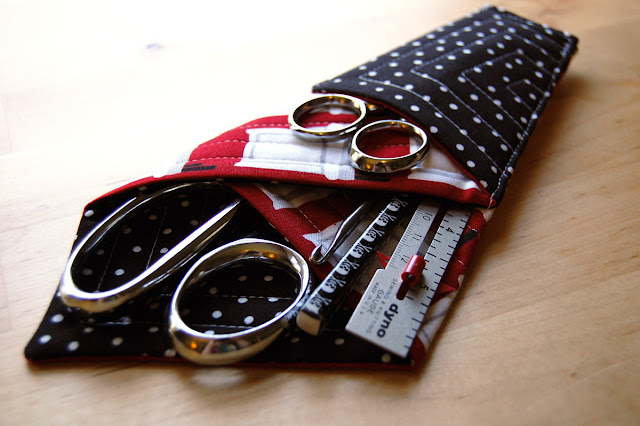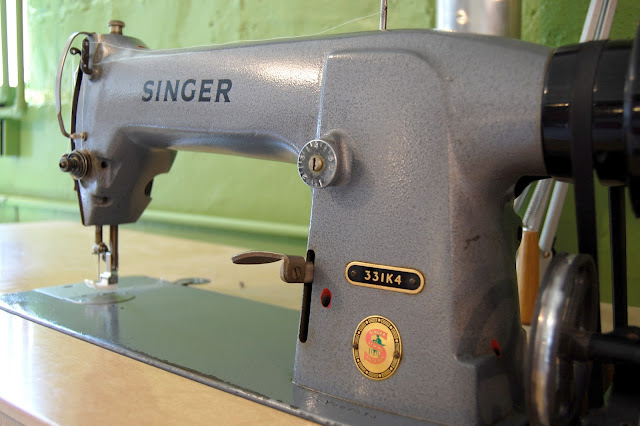Color Inspiration for Quilters and Sewists
As quilters and sewists we work directly with color in found fabrics, that's how we make the patterns and designs in our finished projects. We're not printing with colored inks, working with colored light, or mixing colored pigments to create our designs (unless you are hand dyeing all of your fabrics). And it can be a real challenge pulling together different solid or printed fabrics to communicate an idea or create a pleasing palette for a quilt design. Because we quilters are a creative bunch, we've have discovered the color wheel as an inspiration for helping to choosing fabric color combinations.
But the color wheel has sometimes been represented as the only correct way to create a pleasing color palette. The modern color wheel as we know it was never meant to create hard-and-fast rules, or as a way to limit the imagination to a finite number of color combinations. The color wheel is used within the exploration of Color Theory as a tool to learn about color relationships and expand on what color preferences already exist within you.
Our modern color wheel has evolved from the work of scientists, philosophers, physicists and artists striving to better understand the phenomenon of human color perception through the study of Color Theory. In a way, it's nearly impossible to say that any one person can be a real Expert in Color Theory, as it encompasses so many disciplines; physics as it applies to light and the atomic structure of objects, biology as it applies to the human eye, neurology as it applies to the brain, and psychology as it applies to human reactions to color perception.
While you don't have to study all of these aspects of Color Theory to use the color wheel, it is a good idea to have some basic understanding about what the wheel represents and where it came from. In this way you're free to use any color wheel as inspiration to enhance or add to your own personal color ideas - and not feel restricted to only using set combinations in one color system.
Read about these three color systems in my Color Wheel Basics post here. As a bonus, get a free set of printable Color Basics cards to help you learn about some of the most basic terms and definitions when working with a color wheel!
Itten created this particular style of color wheel for his beginning students, centralizing the primary colors in the wheel, secondary colors in a second layer, and all 12 hues in the outer wheel. We can take a quick look at those three color systems in the format of Itten's wheel below.
RYB Artist's Color Wheel
Artist's have been working with this system for hundreds of years, which is why this color wheel is the most common. In fact, you're probably already familiar with this system, as it's taught to young children when learning to paint. At the basic level, kids learn the three primaries mix together to make the secondary colors. Here's an example, a mixed paint picture made by my kiddo in Kindergarten in which she learned how to create secondary colors from the primaries.
In theory, mixing all colors together in this system creates black, but it doesn't really work that way. Mixing all three primaries together results in a dull, dark muddy gray. These three primaries also restrict the number of colors that can be made, and artists have learned to add other colors to their palettes not found in this system - like black, chartreuse, cyan and magenta or fuchsia. The Artist's color wheel is meant as a starting point for new artists to learn the basics of mixing colors.
All hues in this wheel are described using the very basic hue names red, orange, yellow, green, blue and violet (or purple). This is a deliberate color language meant to make it easier for artists to communicate about color. Hues are always described by the first most dominant hue, followed by the less dominant.
Red/Green/Blue Human Vision Color Wheel
The additive color system is one of light. This is the system your eyes use to detect light waves, and it's also the system used in monitors and computer screens. It's how the screen you are most likely reading this blog post from creates seemingly endless combinations of colors from just three.
In this system, adding all colors together (or just the three primaries) will give you white light. The absence of all colors will result in black (no light). To play around with this system, you need only to find a computer program that allows you to have control over the RGB settings!
Cyan/Magenta/Yellow Partitive Color Wheel
Partitive color is what you see when looking closely at photos in the newspaper, small dots of overlapping color used to create the illusion of many colors from just a few. The primary colors in this system are cyan, yellow, and magenta.
Think funny papers, comic books, or magazine adds to give you an idea of the overlapping qualities of partitive color.
In this system, black is a separate color not able to be produced by the overlapping of any of the other colors. In the printing world, black is often signified as the letter K (CMYK) to signify four basic printing colors of cyan, magenta,yellow and black.
Coincidentally, the CMY color wheel has been in the quilting spotlight the past several years, as many quilting books and tools have been published based on using this color wheel. But it's not the only system or even the best one to use, it's just the one that some authors and teachers seem to prefer.
As I've mentioned above, because we're working with found color in our fabrics, we can look at any of these three color systems to find inspiration. Taking a quick look at the three color systems above, you can see how quilts made using these three different color wheels might appear very different. If a quilt block used the three primary colors of a system, there would be three distinct possibilities of color combinations (red-yellow-blue, red-green-blue, or cyan-magenta-yellow). All three are valid, but each gives drastically different results.
LEARN MORE
Color Matters is a fun website to poke around at and learn more about Color Theory, especially if you've got a bit of a rid to work on the train or bus.
Color Basics Lessons are short and sweet lessons, easy to browse while taking a coffee or tea break.
Artist's RYB Color Wheel, available online, at fine arts stores, and in some quilting stores. I highly recommend picking up one of these for learning more about color theory. This is the best tool for the price at $10 or less, and can be used for color inspiration, and matching fabric colors to true hues.
The CMY Color Wheel, a little harder to find in stores, but a great tool to have on hand.
Itten's Color Star, developed as an intense study aid for artists to delve deeper into color relationships.
Color Paddle Set, this tool is a fun way to explore color mixing by using additive color (by using lights with the clear gels) or as subtractive color (by looking through the gels).
Last but not least, check out my Color Theory Reading List to find a list of books (I'm adding new books monthly to the list) that you can read to learn more.
A quick note! I've updated this post on February 17, 2017 to add some broken links and add some new. I hope you enjoy learning a little about color theory (because I LOVE color theory!), and start noticing the colors all around you each and every day.

















Comments